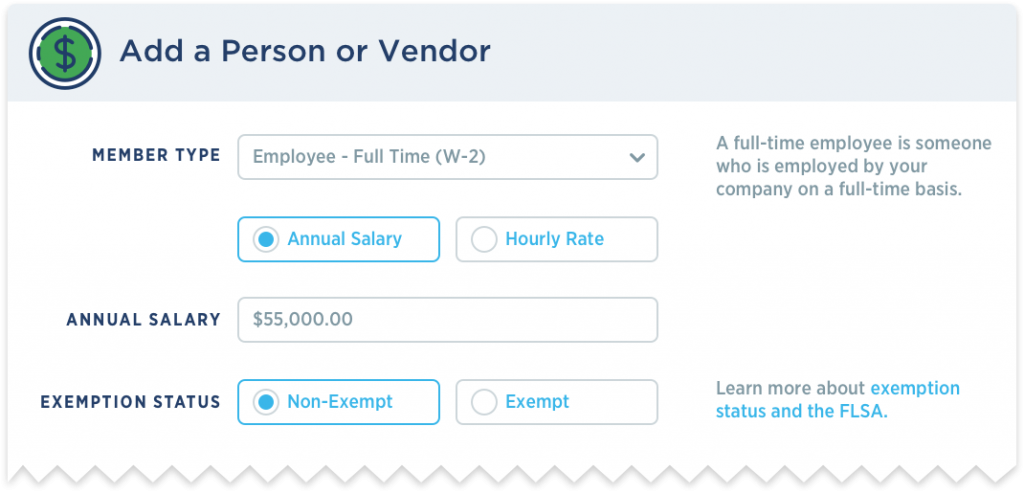Cash Flow – How to Design Your Small Business’s Payroll Schedule
 As a startup business founder, trying to figure out the correct time schedule to pay your workers can be a crucial decision. Managing and predicting cash flow as a small business owner can be very challenging to say the least. When you are a small company cash flow is one of the most important things, and so it may seem, that deciding on payroll schedule that coincides with that makes sense. So if “cash flow” is the lifeblood, then shouldn’t you pay your team when you have the most cash in the bank? Regrettably, business and life is not that cut and dry.
As a startup business founder, trying to figure out the correct time schedule to pay your workers can be a crucial decision. Managing and predicting cash flow as a small business owner can be very challenging to say the least. When you are a small company cash flow is one of the most important things, and so it may seem, that deciding on payroll schedule that coincides with that makes sense. So if “cash flow” is the lifeblood, then shouldn’t you pay your team when you have the most cash in the bank? Regrettably, business and life is not that cut and dry.
Now even the logic of train of thought seems to make sense, the fundementals of small business bookkeeping do not allow you, as the business owner, to make a decision so seeminglessly when it comes to deciding on a payroll schedule.
There are a couple of fundamental ideas you will need to understand about this choice — and comprehending the why behind setting up your payroll will help you make an even more educated, effective financial decisions as a business owner.
How does payroll impact your cash flow
Firstly, let’s go over one of the basic things you need to do before you even make a decision on how to schedule your payroll to align with your cash flow – which is to choose a payroll schedule in general.
Now as a business owner, if you were to decide on a payroll schedule in agreement to cash flow is kind of like a chicken/egg scenario. Obviously, cash flow should be a big factor in deciding when to pay your staff. But from the point of view of an accountant, deciding on a payroll schedule only based on your cash flow — is not common industry practice.
The reason is due to the fact that the payroll schedule tends to dictate the cash flow, not the reverse.
When Payroll Doesn’t Determine Cash Flow

Of course, there are exceptions to the rule.
As an example, if you charge your customers on the first of the month for your services, it makes sense for you to do a monthly payroll right after that because it’s when your company is most flush income. (Again, this is assuming that all your customers always pay on time i.e. Invoicing cycles) So the next thing to keep in mind is the fact that you may have workers on different types of pay structures; salary, hourly, commision or contract based. And since these are all different types of employees, they will not all have the exact same pay dates. A company that usually hires a lot of lower waged hourly workers, you can’t expect those workers to only get paid on a monthly or even bimonthly time frame — because they face different financial circumstances than those higher-paid senior-level management employees.
7 Elements to Understand Before Your Choose Your Payroll Schedule
 Now you are boss, so if you want to choose a payroll schedule based on cash flow what is stopping you? As a CPA, we would advise doing just that. It’s beneficial for your business.
Now you are boss, so if you want to choose a payroll schedule based on cash flow what is stopping you? As a CPA, we would advise doing just that. It’s beneficial for your business.
The what do you need take into account before you pick a payroll schedule? When contemplating what is the best time to pay your workers, you cannot use your cash flow statements as the only factor. You actually have to analyze a bunch of different things before you finally make your choice;
State Requirements
Before you assess any payroll schedule, you to know what California’s requirements are for payroll schedules.
Before you consider any payroll schedule, you need to know what your state requirements are for payroll schedules. This US Department of Labor table is a solid resource for an employer getting ready to start hiring. It provides some insights on what the state of California requires.
If you lived in Nebraska or Pennsylvania, these states do not dictate at all when employers are required by law to pay it’s workers — which means you are legally allowed to set your payroll schedule at your discretion.
In California, wages, with some exceptions, must be paid at least twice during each calendar month on the days designated in advance as regular paydays. The employer must establish a regular payday and is required to post a notice that shows the day, time and location of payment. Labor Code Section 207 Wages earned between the 1st and 15th days, inclusive, of any calendar month must be paid no later than the 26th day of the month during which the labor was performed, and wages earned between the 16th and last day of the month must be paid by the 10th day of the following month. Other payroll periods such as weekly, biweekly (every two weeks) or semimonthly (twice per month) when the earning period is something other than between the 1st and 15th, and 16thand last day of the month, must be paid within seven calendar days of the end of the payroll period within which the wages were earned.
Understand Your Break-Even Point
It’s very important to know the minimum amount of revenue your business needs to make each which will help to decide when to hire more people and what you can afford to pay in overhead labor costs each month. Score small business association has a handy break-even template that is useful in figuring out your current break-even numbers and creating what-if scenarios for future hiring plans.
Tip: Some business owners forget that a worker that gets $10 dollars an hour will have a cost to them of about $11.25 – 15 per hour, depending of course on what other benefits are offered from the company such as:
- Health Insurance
- Vision and Dental Insurance
- 401(k)
- Commuter Benefits
- Life Insurance
- Health Savings Account (HSAs)
- Flexible Spending Accounts (FSAs)
- Short- & Long-Term Disability Insurance
Cash Flow
Because Cash flow is still the lifeblood of the business! The things that your profit & loss statement does not always tell the full story of what you to be looking at. You also need to account for other cash outlays that may not be included in that report, such as sales tax, business loan payments, payroll tax liabilities, business credit card payments, owner draws or even purchases of assets like property, equipment or inventory.
Compliance
Next, what are the overtime requirements? How often will be required to pay taxes and file returns? Do you have any local or city taxes to factor in? Do you have employees working in any other states?
Employees’ Details
How many employees are currently on staff or are you planning to hire? How many hours will each of them work? Are they going to be hourly, salary, remote, commission? How often are they expecting to be paid? What is the competitive and the industry standard for their job title or role? All of this is important when you choose a particular payroll system or hire an outsourced company to handle it.
Payroll System and Processing
 When you are contemplating about your payroll structure (I know sounds fun, right?) you will want to figure out who will be creating the paychecks, processing returns and scheduling tax payments. Outsourcing is usually cheaper and can offer peace of mind if you do not have an HR person that has dealt with payroll before.
When you are contemplating about your payroll structure (I know sounds fun, right?) you will want to figure out who will be creating the paychecks, processing returns and scheduling tax payments. Outsourcing is usually cheaper and can offer peace of mind if you do not have an HR person that has dealt with payroll before.
If you are familiar with it there are software apps such as Gusto, or Justworks or even QuickBooks Full Service Payroll that allow you to create the paychecks and Intuit will handle the tax compliance aspect.
Old School Paper Checks vs. Direct Deposit
As mentioned earlier in this article, there are some rare situations during which sometimes cash flow can help to set the payroll schedule. But the opposite can also be true.
So say you issue paper checks, you will not have any control over when the employee goes and cashes it, which could throw off your cash flow. Some employees may wait for a couple of checks to come in and then go cash all of them ( like 2 or 3) at one the same time. For a small business owner, this kind of thing could make your account become overdrawn since the business may also have large vendor payments and sales tax payments that may be clearing at that same time.
Now, if you get your workers to use direct deposit, you have more control of your cash flow because you know that all of the paychecks are actually clearing at the same time — which is usually 2 business days before the employee sees the money deposited in their account.
If you are wondering if you can actually force employees to accept direct deposit, well some states do, but in California, you must get their consent.
If an employee doesn’t have a bank account, (it can happen) you can look into something called paycards. Some payroll apps or providers offer these along with your payroll processing.
Now how do you choose a payroll schedule that works best for a company?
So now that we have gone over the 7 critical aspects that would play a role in your decision planning for a payroll schedule. The next step is to learn about the pros and cons of each type of payroll schedule.
Weekly
You pay your staff each week, for the previous week’s work. A common weekly payroll structure pays employees each Friday, for the previous week.
- Example: Sunday through Saturday
Biweekly
Your employees are paid every week, for the previous 2 weeks. A standard biweekly payroll schedule pays employees on a set day following the end of the pay period.
- Example: Pay period runs from Sunday, April 29 through Saturday, May 12 with a pay date of Thursday, May 17
Semi-monthly
Not to be confused with biweekly, this pay schedule is typically the 1st and 15th of the month or 16th and 30th. In other words, there are always only two pay dates per month versus a biweekly that could possibly have three.
- Example: May 3, May 17, and May 31 for pay periods ending April 28, May 12, and May 26, respectively
Monthly
This is payroll that is paid once per month. The state of California requires that employees must be paid at least twice per month on dates the employer has designated in advance.
Benefits and Deductions
One more thing to think about is that benefits and deductions are often calculated on a monthly basis. When looking at biweekly vs semi-monthly, you’ll want to manage these carefully. Semi-monthly may be easier because you just divide by two.
Remember – for bi-weekly, you have to calculate based on the 26 pay periods per year (some years may have 27!).
Which Payroll Schedule Is Best for Your Business?
So again depending on if have an HR depart that wants to handle of your company’s payroll duties, determining the right payroll schedule for your company, should be accomplished by taking stock of your it’s financial health and with the help of your CPA or bookkeeper. Many companies choose bi-weekly.
WHY?
“Biweekly payroll is a good balance between doing the burdensome office work of processing payroll too often—as with, say, weekly payroll—and in not doing it often enough to keep your employees paid without huge delays,” says William Lee, CEO of Probooks.
“Although in some industries like construction where certified payroll requirements may mandate weekly payroll, weekly becomes the only option. This means time sheets need to be turned in and processed more frequently, which adds additional work. However, employees often like weekly payroll, as it gets their money to them more quickly.”
Although employees may prefer weekly, many businesses prefer biweekly payroll because the cost to process is cheaper. Companies that offer payroll services, like ADP or Paychex, generally charge each time paychecks are processed. If not using a payroll service, it takes time to add up all those hours and make sure overtime, vacation, sick, or other PTO is recorded correctly.
Conclusion
Remember, that using cash flow patterns should not be the only deciding factor when determining which payroll schedule to use for your employees.
There are other things that need to be accounted for and examined. Look at the needs of your business, employees, budget, and more. You’ll find a solution that works for everyone. Huckabee CPA would be happy to give a free consultation and answer any questions you may have.







